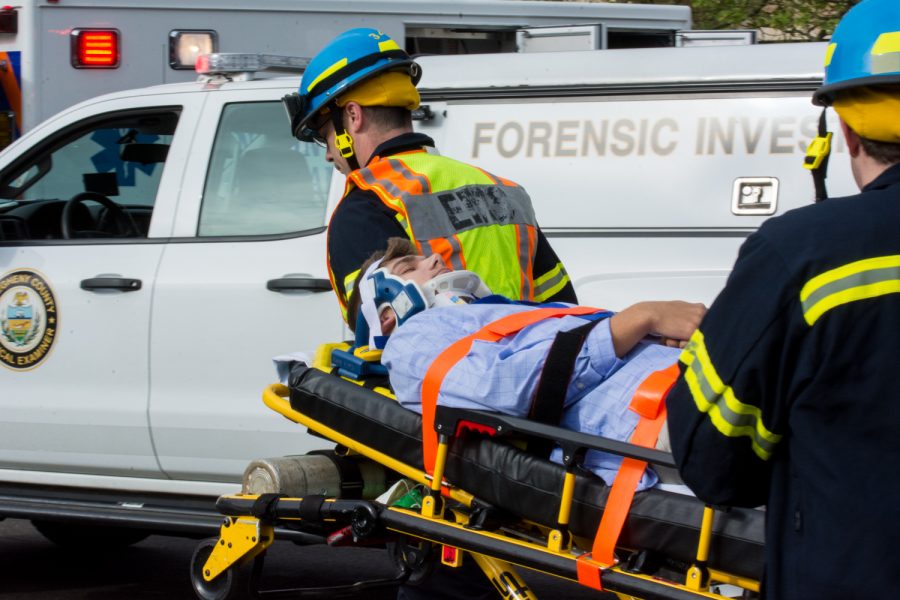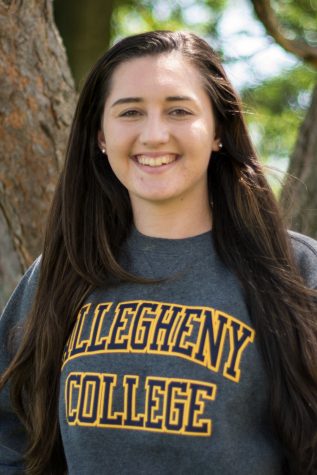When the World Comes Crashing Down
A recap on one of the most important events of the year, Mock Crash
As horrible as it appeared, the event that took place in front of NASH Thursday morning was a demonstration rather than a reality. Yet, the importance of the message it sent to the senior class will hopefully resonate throughout the Prom weekend and beyond.
May 3, 2019
Two bloody and broken students stumble from the wreckage in NASH’s front parking lot. Traumatized, they begin to panic, wondering what on earth happened. How did things take such a dark turn so quickly? Where did that other car come from, and how do they go back to five minutes ago before their lives were forever changed? Screaming and calling out to their unmoving friends, they are separated as the first responders arrive, and a sea of flashing lights adds to the confusion of the situation, trapped in a nightmare that they can’t wake up from.
As horrible as it appeared, the event that took place in front of NASH Thursday morning was a demonstration rather than a reality. However, turning a blind eye to the importance of the simulation is not just ignorant — it could also be deadly.
The annual Mock Crash — put together by SADD (Students Against Destructive Decisions) — aims to be an eye-opening experience for the students of NASH that may not understand just how real the situation could be. After all, auto crashes are the leading cause of death for teens ages 15-20, so the lesson brought to the senior class yesterday was taken personally and seriously.
“It’s a very important project,” Mr. Longo, the SADD adviser, explained. “I sincerely hope that, having seen and witnessed the demonstration, seniors will take it to heart.”
The day started with the seniors of NASH pouring into the auditorium. After a brief introduction from Dr. Kreider, two representatives from UPMC Health began the presentation, sharing stories and facts. A rustle across the auditorium could be heard each time a particularly shocking statistic was revealed. For example, 11 teens in the U.S. die every day from car crashes involving distracted driving. Next, several emotionally moving videos were played that placed each student in the audience in the position of someone who had died in a car crash. In a chilling way, it allowed the senior class to imagine what it would be like for their parents to receive the news and be forever damaged by the loss of a child.
At the conclusion of the videos, an additional speaker came to the stage — or rather, an additional three. Kara McLaughlin, her father, and her grandmother were brave enough to share their story. Ten years ago, Kara’s father was involved in a crash that not only changed the course of his life but had an effect on many more people than he possibly could have imagined. Even after physical wounds may heal, he told the audience, there is much more mending to be done to relationships, memories, and one’s mind.
“Kara’s piece made it that much better,” Longo said. “It was a million times more impactful and it brought the message home because SADD is a peer to peer program.”
At the conclusion of the presentation, students were led from the auditorium to the teacher parking lot for the actual Mock Crash performance. Members of SADD pieced together a stirring and horrifying simulation of the scene of a car crash. Using the real names of those involved in the performance, it painted a clearer image of just how close to home something like this tragedy could strike.
“Seeing the mother come in screaming ‘my baby, my baby’ really got to me,” said Paige Hartle, one of the senior bystanders during the mock crash. “The other actors were great as well. ”
For Longo, Thursday’s enactment was especially powerful. “This was the best year, in my opinion, because of the student actors,” he said.
Emily Betler, a member of SADD, was standing on the other side of the crash, facing the crowd of students. She remarked later that, “I was able to see the faces of my classmates and that made it even more emotional because you could see the impact it had on them.”
After witnessing the mock crash, the seniors filled back into the building to pick up with a two-hour delay schedule. However, the impact was far from over, and SADD wasn’t done setting the scene. Fifty students joined in spreading awareness of distracted driving by becoming “statistics” to represent someone who would not be present due to a fatal accident. The statistics kept silent throughout the day, yet they were heard loud and clear. Marked by their black t-shirts, they followed rules such as no talking, smiling, making facial expressions, texting, or communicating by any other means. By doing so, they were able to demonstrate the hole left behind should their life, or someone else’s, be lost.
The day ended with the statistics lining the hallway that leads to the student parking lot, shoulder to shoulder, not saying a word as the rest of NASH’s students made their way through. Never has silence said so much.














